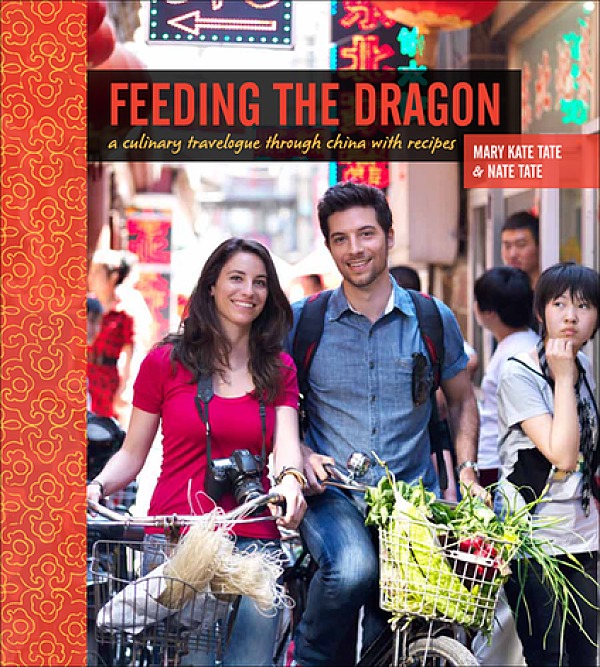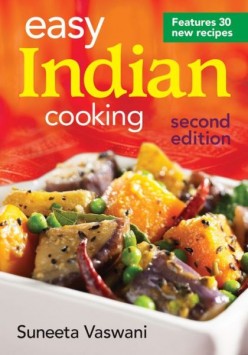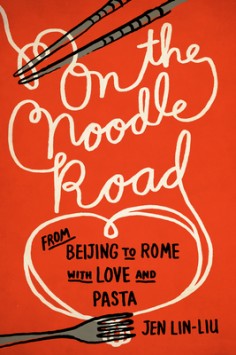Feeding the DragonA Culinary Travelogue Through China with Recipes
Arranged by the authors’ travel itinerary to highlight the uniqueness of nine specific regions in China, Feeding the Dragon is part cookbook and part cultural travelogue, overflowing with sumptuous but easily prepared authentic dishes. From Buddhist vegetarian dishes enjoyed on the snowcapped mountains of Tibet to lamb kebabs served on the scorching desert of Xinjiang Province, one hundred recipes are presented alongside first-person narratives and travel photographs.
Website: Feeding the Dragon
With little more than two backpacks, a camera, and a tarp, Mandarin-speaking American brother and sister Nate and Mary Kate Tate traveled more than 9,700 miles throughout China to share the country’s inspiring culture and cuisine with kitchens in the West. What began as a travelblog (feedingthedragon.com) documenting the duo’s journey has evolved into a visual narrative of food, culture, and travel inside Feeding the Dragon.
Arranged by the authors’ travel itinerary to highlight the uniqueness of nine specific regions in China, Feeding the Dragon is part cookbook and part cultural travelogue, overflowing with sumptuous but easily prepared authentic dishes. From Buddhist vegetarian dishes enjoyed on the snowcapped mountains of Tibet to lamb kebabs served on the scorching desert of Xinjiang Province, one hundred recipes are presented alongside first-person narratives and travel photographs.
Western cooks will find healthy recipes brimming with authentic ingredients and flavors, such as Lychee Martini and Shanghai Soup Dumplings, Pineapple Rice, Coca-Cola Chicken Wings, Green Tea Shortbread Cookies, and Wild Mushroom Salad. Feeding the Dragon also provides handy reference sidebars to guide cooks with time-saving shortcuts such as buying premade dumpling wrappers instead of making them from scratch, or using a blow-dryer to finish your Peking Duck. A comprehensive glossary of Chinese ingredients and their equivalent substitutions complete the book. Feeding the Dragon is not an Americanized adulteration of classic Chinese cuisine. Instead, the Tates offer readers and cooks a beautiful journey through Chinese history, culture, tradition, and food.
Nate Tate was one of the first Texas college students to study at Beijing’s prestigious Tsinghua University. He is a self-professed Chinese food obsessive, and in his quest to master the cooking of Chinese food, he has talked his way into restaurant kitchens across China to learn straight from the cooks. He has toured seventeen of China’s twenty-two provinces, and while living in Beijing, Nate worked as a restaurant designer and as an art director at an international advertising agency. In New York City, he cofounded a creative agency with his sister Mary Kate Tate first became interested in China after visiting the faraway country as a high school student. She later studied Mandarin and Chinese history at the University of Texas at Austin and at Nanjing Normal University in China. In addition to cofounding a creative agency with her brother and working as a copywriter in New York City, she has worked as a teacher in China’s Hebei Province and as a writer in Beijing.
Sorry no events listed
“This is a heartwarming and often gripping tale of a brother-sister team who bike back roads, slog muddy fields, trudge across mountains, and navigate ancient alleyways to explore the kitchens and culinary soul of China. The recipes they gather from China’s wonderfully hospitable people will tantalize your taste buds as Nate and Mary Kate’s decade-long adventure inspires your sense of wanderlust.” —James McGregor, author of One Billion Customers: Lessons from the Front Lines of Doing Business in China
“Feeding the Dragon is a stunning achievement; it’s a foodie’s Far East fantasy come true, with pictures and recipes to match.” —Adam Roberts, creator of The Amateur Gourmet
“The Tate siblings are my kind of travelers, my kind of eaters, and my kind of cooks. In Feeding the Dragon, they have combined adventure travel, history, and culture to create a personal, fun, and interesting cookbook. The photos, recipes, and stories are all fabulous. I love this cookbook!” —Li
“Chinese food is more than just a take-out order of sesame chicken — there’s an entire world of Chinese food very different from what we know. In the cookbook and travelogue Feeding the Dragon, brother and sister Nate and Mary Kate Tate seek to uncover the different and very unique cuisines of China. Over the past 10 years (at first, Nate thought it would only take one year for the book) the two have traveled throughout the country looking for classic and characteristic foods. On their journey they discovered more than just that — they were also humbled by the warmth they received from the Chinese people, many of whom allowed them to step into their own homes and restaurants to show the siblings how they cook.” ––Kitchen Daily http://aol.it/oNNWlp
“Nate Tate, who lived and studied in Beijing, initially learned how to cook authentic Chinese cuisine from his housekeeper. He and his sister ultimately went on a three-month culinary trek covering almost 10,000 miles. Along the way, they convinced the people who cooked for them to teach them about Chinese food and share their recipes. The book includes lots of photos and essays along with recipes that cover numerous provinces. You’ll learn everything from how to make a lychee martini like a resident of Beijing to how to whip up Sichuan Hot Pot. There are sample menus so you can cook to impress your friends, and a helpful glossary in the back explains ingredients like sha cha sauce and how you use them.” ––Portland Press Herald http://bit.ly/q2lvkY
Recipes: Macanese Fried Rice, Guotie Pot Stickers (Shanghai)
Macanese Fried Rice
Walking along the waterfront down the Rua das Lorchas, past pastel stucco apartment buildings splashed with freshly washed clothes dancing and drying in the sun and the occasional window box bursting with red and pink geraniums, the pungent smell of drying fish assaults my nostrils. All along the sidewalk, salted fish are laid out on woven wooden trays baking in the direct sunlight. Dried fish, especially bacalao (salt cod), is one of the many ingredients introduced by Macau’s Portuguese colonists and is an important component in Macanese cooking. In the fifteenth century, Portuguese fishermen came up with a way to preserve surplus fish by salting and sun-drying them on the decks of their ships.
To me, this dish is the essence of Chinese-Portuguese fusion. Fried rice, a distinctly Chinese dish, is fused with Mediterranean black olives, chorizo, and salt cod. Bacalao is used primarily as a flavoring agent in Macanese fried rice; however, it is difficult to find and prepare. We substitute a dash of Asian fish sauce in its place in this recipe, which gives the rice a similar flavor, but if you can find bacalao (or its Italian equivalent, baccalà) at a fishmonger or specialty food store, substitute 3 ounces (rehydrated and chopped) for the Asian fish sauce.
Serves 4 to 6
Fried Rice
1/4 teaspoon sugar
1 tablespoon Asian fish sauce
Juice of 1/2 lime
3 tablespoons olive oil
3 cloves garlic, minced
1 small onion, thinly sliced into half-moons
2 large eggs, beaten
3 cups cooked long-grain white rice, chilled
1 small green bell pepper, seeded and thinly sliced
1/2 cup corn kernels (fresh or frozen and thawed)
4 ounces chorizo sausage, thinly sliced
1/2 cup pitted green olives
In a small bowl, combine the sugar, Asian fish sauce, and lime juice and stir until the sugar is dissolved.
Heat the oil in a wok over high heat. Add the garlic and onion and sauté for 3 minutes, or until the onion starts to turn translucent. Pour in the eggs and scramble until they are just set, and then immediately toss in the rice and stir until well mixed. Decrease the heat to medium and add the bell pepper, corn, chorizo sausage, olives, and the sugar mixture, and stir-fry for 3 minutes. Remove the wok from the heat and let rest for 4 minutes before serving.
Guotie Pot Stickers (Shanghai)
The word for “pot stickers” in Chinese is guotie, literally “pot-stick,” a name they have earned from their cooking method. Chinese cooks first steam guotie in giant flat-bottomed iron pans. When all the water is absorbed by the dumplings, they are left in the pan to get crispy and “stick” to the pan. We recommend using a nonstick skillet when making these so that the dumplings don’t actually stick to the pan forever. These Guotie Pot Stickers make amazing appetizers served with the dipping sauce. We like to make more dumplings than we can eat and freeze the extra for later.
Makes about 36 dumplings
Dipping Sauce
1 cup Chinese black rice vinegar
1/2 teaspoon minced fresh ginger
1 teaspoon toasted sesame oil
1 tablespoon minced fresh cilantro
1/4 cup light soy sauce
1 tablespoon sugar
Dumplings
12 ounces ground beef or ground pork
1 tablespoon light soy sauce
1 tablespoon cornstarch
1 teaspoon minced fresh ginger
3/4 cup minced green onions, green and white parts
1/2 teaspoon sugar
2 teaspoons toasted sesame oil
Pinch of salt
About 36 round Dumpling Wrappers (purchased premade, or see page 258)
3 tablespoons vegetable oil
3/4 cup water
To make the dipping sauce, whisk together the black rice vinegar, ginger, sesame oil, cilantro, soy sauce, and sugar in a small bowl. Set aside.
To make the dumplings, combine the meat, soy sauce, cornstarch, ginger, green onions, sugar, sesame oil, and salt in a bowl and stir in one direction with a chopstick until just mixed. Fill a small bowl with some water. Hold a dumpling wrapper in the palm of your hand and place 1 heaping teaspoon of filling in the center. Dip your finger in the bowl of water and run it around the edge to help make a good seal. Lightly fold the wrapper over on itself, but don’t touch the edges together. Starting at one end, use your fingers to make a small pleat on the side of the wrapper closest to you, then press the pleat into the other side and pinch together firmly. Keep making pleats down the dumpling opening in this way until completely sealed (see Dumpling Folding Tips on page 255). Repeat this process with the remaining filling and wrappers. Freeze any dumplings that you don’t intend to cook immediately (see Dumpling Freezing Tips on page 256).
Heat 1 tablespoon of the vegetable oil in a nonstick skillet over medium-high heat. Place 12 dumplings pleat side up in the pan so that they are just touching each other. Cover and cook for 1 minute. Decrease the heat to medium-low, pour 1/4 cup of the water into the pan, and cook, covered, for 8 to 10 minutes, until all the water is absorbed by the dumplings and their bottoms are crusty brown. Repeat this process 2 more times with the remaining dumplings, oil, and water. Serve the dumplings with a side of the dipping sauce.









Leave a Reply